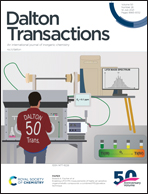A hollow Co9S8 rod–acidified CNT–NiCoLDH composite providing excellent electrochemical performance in asymmetric supercapacitors†
Abstract
Co9S8 and transition metal hydroxides are both potential pseudo-capacitance electrode materials for supercapacitors. Co9S8 has a large specific capacitance and electrochemical activity, and transition metal hydroxides have the advantages of high capacitance and redox activity due to their multiple valence metals and open layered structure. In this study, Co9S8 and NiCoLDH are used to form a Co9S8–aCNT–NiCoLDH composite electrode material by twining acidified carbon nanotubes (aCNTs) around hollow Co9S8 rods and then compounding nickel cobalt hydroxide (NiCoLDH) on the outside. aCNTs provide more electronic channels, which bring more active electrochemical reactions and absorb the volume expansion of Co9S8. The hollow Co9S8 rods and flower-like NiCoLDH structures ensure that the electrode has a highly open structure, which increases the contact area with the electrolyte and is beneficial for ion transport. The outer NiCoLDH can also reduce the volume expansion of Co9S8. These advantages ensure the high specific capacitance and rate performance of the Co9S8–aCNT–NiCoLDH electrode material. Co9S8–aCNT–NiCoLDH was used as the positive material to fabricate asymmetric supercapacitors with attractive energy density and power density, which further proved its excellent electrochemical performance.



 Please wait while we load your content...
Please wait while we load your content...